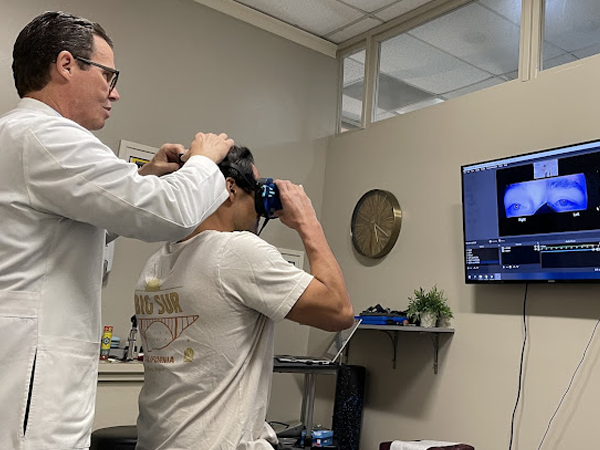
The brain is considered to be the most complex organ in the body. Each brain contains billions of cells, called neurons, which are responsible for relaying messages to and from all areas of the body. These messages take the form of electrical impulses, and it is these that create what are known as brain waves.
Brain mapping is a revolutionary technique that involves evaluating these brainwaves and identifying opportunities to improve the communication between various regions of the brain. The process uses cutting-edge software which captures the electrical impulses in the brain via a cap placed over the scalp. The entire process takes around 15 minutes and is completely non-invasive and painless. The results are produced in a visual map that illustrate the brain wave patterns in different parts of the brain. This map will enable us to identify any areas that appear to be different to the ‘normal’ results that are present on the FDA-approved normative database, and that could be indicative of cognitive issues.
There are several key functions of the brain that can be mapped. These include:
- Memory
- Learning
- Aging
- Drug effects
Brain Mapping for ADHD
Many people are surprised to learn that there are biological differences between the brain of someone with ADHD and someone with it. Some of these include the following:
- Research has found the people with ADHD have a smaller overall brain size, while the areas of the brain that are responsible for emotional processing and impulsivity – the amygdala and the hippocampus – are also smaller in people with ADHD too.
- There are alterations in blood flow to various areas of the brains for people with ADHD compared to people without the condition. This includes decreased blood flow to certain prefrontal areas of the brain, which are responsible for tasks such as planning, organizing, paying attention, remembering and emotional reactions.
- In the ADHD brain, there is dysregulation of the body’s neurotransmitters, dopamine and noradrenaline. There is either too little of these chemicals, not enough receptors for it, or the dopamine isn’t used efficiently.
Brain mapping can be used in the diagnosis of ADHD, where it takes place alongside a variety of other assessments to determine if an individual is affected. It may also be able to inform on the severity of ADHD, which we enable doctors to prescribe the most effective treatments.
Brain Mapping for Anxiety and Depression
Research shows that both anxiety and depression may be evident on images produced from brain mapping. For example:
- Low theta brainwave activity is indicative of stress and poor emotional awareness.
- Extremely high levels of beta brainwave activity are a sign of high arousal and an inability to relax.
- Low alpha brainwave activity can lead to high stress levels, insomnia and obsessive-compulsive disorder.
- High levels of gamma brainwave activity can cause high stress levels.
Brain mapping can help by pinpointing abnormalities in areas of the brain that regulate emotions and stress. This makes it easier to identify anxiety and depression and enable doctors to make recommendations for treatment, whether this is medication or a neurofeedback training program.
For more information about how brain mapping helps to target anxiety, depression and ADHD, please contact our friendly and knowledgeable team at (305) 889-7488.






